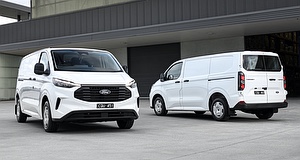Ford Motor Company reported a remarkable 16% increase in U.S. auto sales for April, driven primarily by a surge in demand for pickup trucks. This growth comes as consumers rush to purchase vehicles ahead of anticipated price hikes due to new tariffs. The automaker’s aggressive pricing strategies, including employee discounts, have also played a significant role in this sales boost.
Key Takeaways
- Sales Growth: Ford’s U.S. sales reached 208,675 units in April, marking a 16% year-over-year increase.
- Pickup Truck Dominance: Sales of Ford’s pickup trucks surged by 23%, with the F-Series and Maverick leading the charge.
- Electric Vehicle Decline: Despite overall sales growth, electric vehicle sales fell sharply, with a 40% decrease compared to last year.
- Pricing Strategy: The company implemented an employee pricing program, offering significant savings to customers.
Strong Demand for Pickup Trucks
Ford’s sales performance in April was significantly bolstered by its pickup truck lineup. The company sold 116,955 trucks, a 19% increase from the previous year. Notable highlights include:
- F-Series Sales: 72,765 units sold, up 13%.
- Maverick Sales: 20,183 units sold, a record high, reflecting a 67% increase.
- Ranger Sales: 7,006 units sold, up 62%.
This strong demand for trucks has contributed to Ford’s best April sales results in 25 years, showcasing the brand’s enduring popularity in the pickup segment.
Challenges in Electric Vehicle Sales
While Ford celebrated its overall sales increase, the company faced challenges in its electric vehicle segment. Sales of electric models dropped significantly due to:
- Inventory Constraints: Low supply levels for models like the Mustang Mach-E and F-150 Lightning.
- Model Year Transitions: The transition to 2025 models has affected availability, with the Mach-E and Lightning having only 9 and 19 days of supply on dealer lots, respectively.
Despite these setbacks, Ford remains optimistic about a rebound in EV sales as new models become available.
Effective Pricing Strategies
Ford’s sales surge can be attributed in part to its strategic pricing initiatives. The company launched an employee pricing program that offers discounts ranging from $2,000 to $10,000 on various models. This initiative was particularly timely, coinciding with the implementation of new tariffs on imported vehicles, which created urgency among consumers to make purchases before potential price increases.
Broader Market Trends
Ford’s success in April aligns with a broader trend in the U.S. automotive market, where consumer demand remains strong. Other automakers, such as General Motors, also reported significant sales increases, indicating a robust recovery in the industry.
As Ford continues to navigate the evolving market landscape, its focus on pickup trucks and strategic pricing will likely remain key components of its sales strategy moving forward. The company is expected to report its first-quarter earnings soon, which will provide further insights into how these strategies are impacting overall performance.
FAQ: Ford Reports 16% Increase in April Auto Sales
1. What drove Ford’s 16% increase in U.S. auto sales in April?
Ford’s 16% sales increase in April was primarily driven by strong consumer demand for pickup trucks and effective pricing strategies, including an employee discount program. Consumers also rushed purchases ahead of anticipated price hikes due to new tariffs.
2. How many vehicles did Ford sell in April?
Ford sold a total of 208,675 vehicles in the U.S. in April, representing a 16% year-over-year increase.
3. Which Ford models contributed most significantly to the sales increase?
Pickup trucks played the most substantial role in Ford’s April sales growth. Notable performances include:
- F-Series: 72,765 units sold (up 13%)
- Maverick: 20,183 units sold (up 67%, setting a record)
- Ranger: 7,006 units sold (up 62%)
4. What challenges did Ford face with electric vehicle sales?
Ford faced notable challenges in its electric vehicle (EV) segment, experiencing a 40% decline in EV sales compared to the previous year. Key issues included inventory constraints and model year transitions, resulting in limited availability for popular EV models like the Mustang Mach-E and F-150 Lightning.
5. What specific issues affected the availability of Ford’s electric vehicles?
Inventory levels for electric vehicles were significantly constrained, with only nine days of supply for the Mustang Mach-E and nineteen days of supply for the F-150 Lightning on dealer lots. Additionally, the transition to the 2025 model year contributed to temporary availability gaps.
6. What is Ford’s employee pricing program, and how has it influenced sales?
Ford implemented an employee pricing program offering discounts ranging from $2,000 to $10,000 on select models. This aggressive pricing strategy incentivized consumers to purchase vehicles ahead of expected price increases due to new import tariffs.
7. Are other automakers experiencing similar sales trends?
Yes, Ford’s April sales boost aligns with broader industry trends, as other automakers, such as General Motors, have also reported significant sales increases. This indicates a strong recovery in the U.S. automotive market overall.
8. What is Ford’s sales outlook moving forward?
Ford is likely to maintain its focus on high-demand segments, particularly pickup trucks, along with strategic pricing initiatives to sustain its sales momentum. The company remains optimistic about rebounding electric vehicle sales as new inventory becomes available.












Leave a Reply